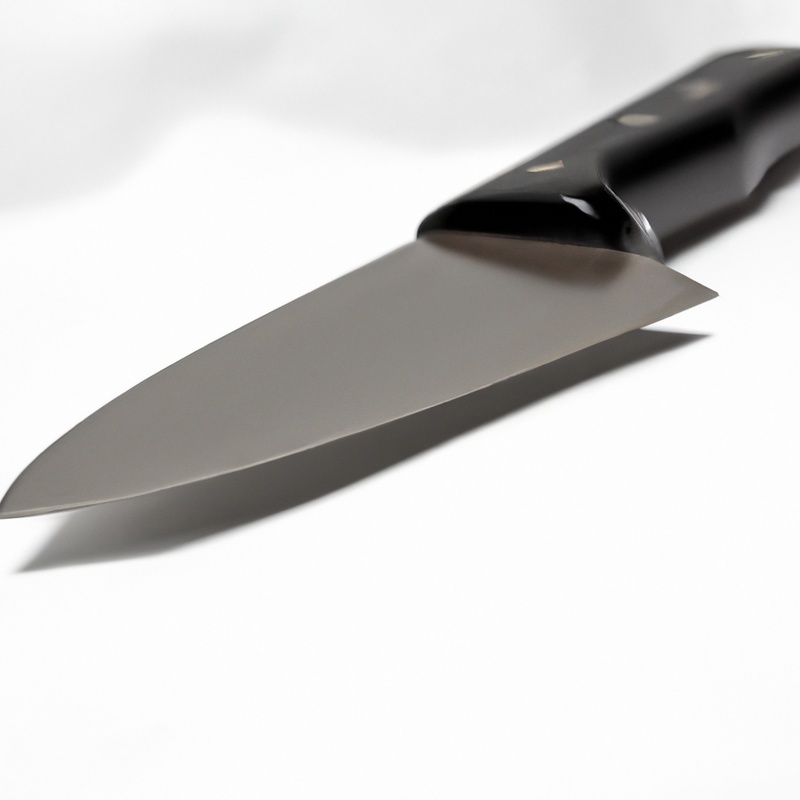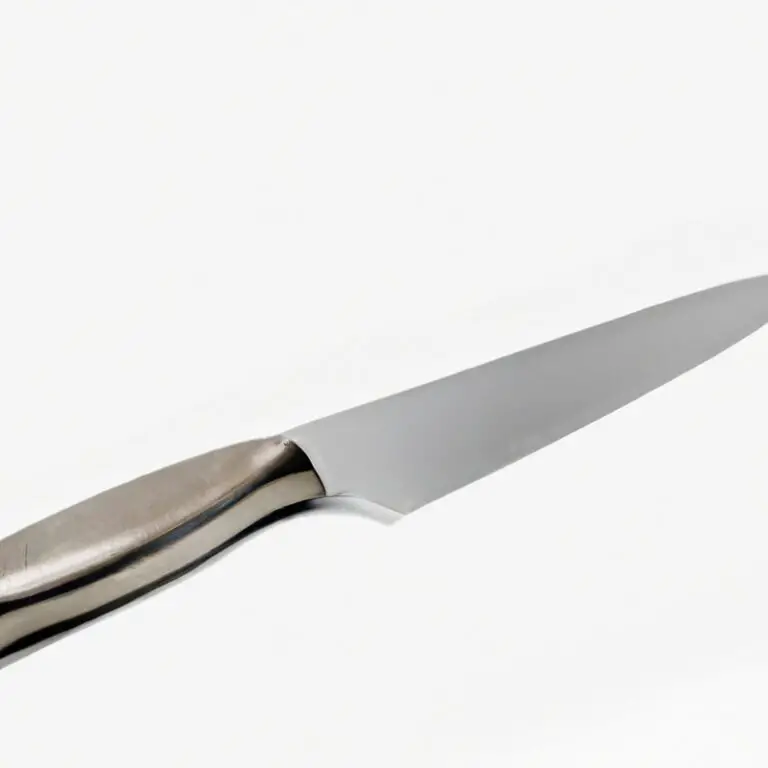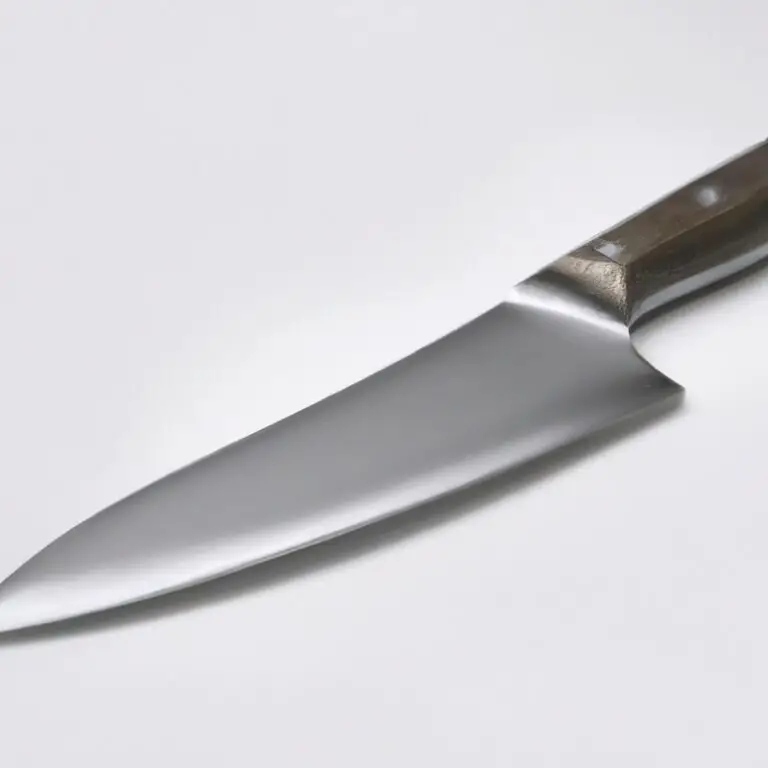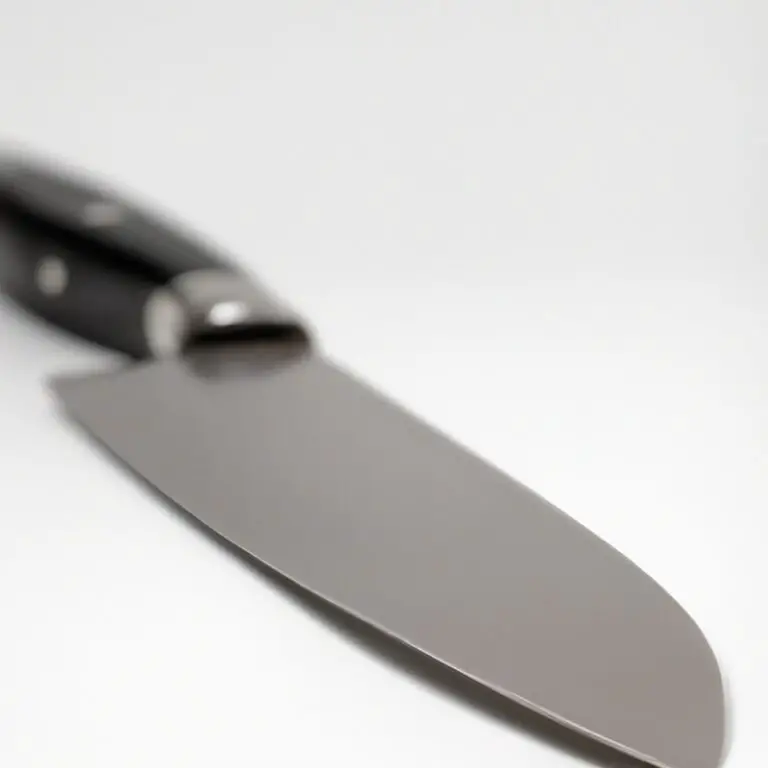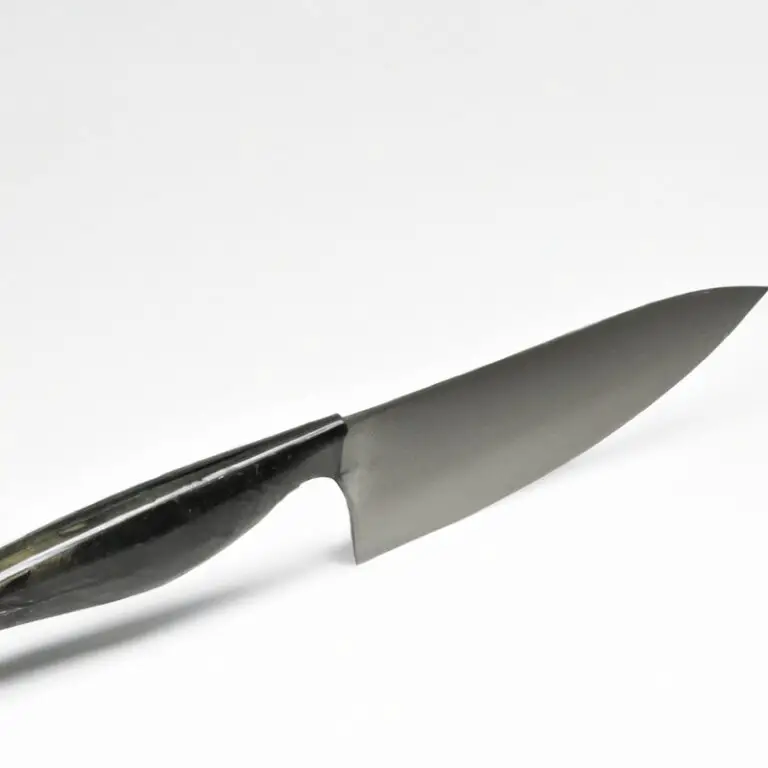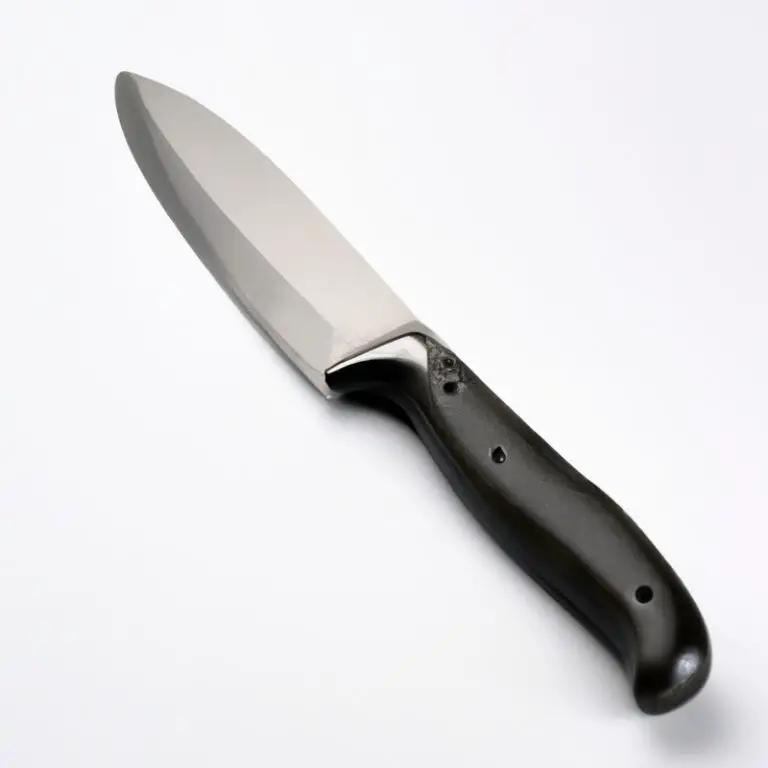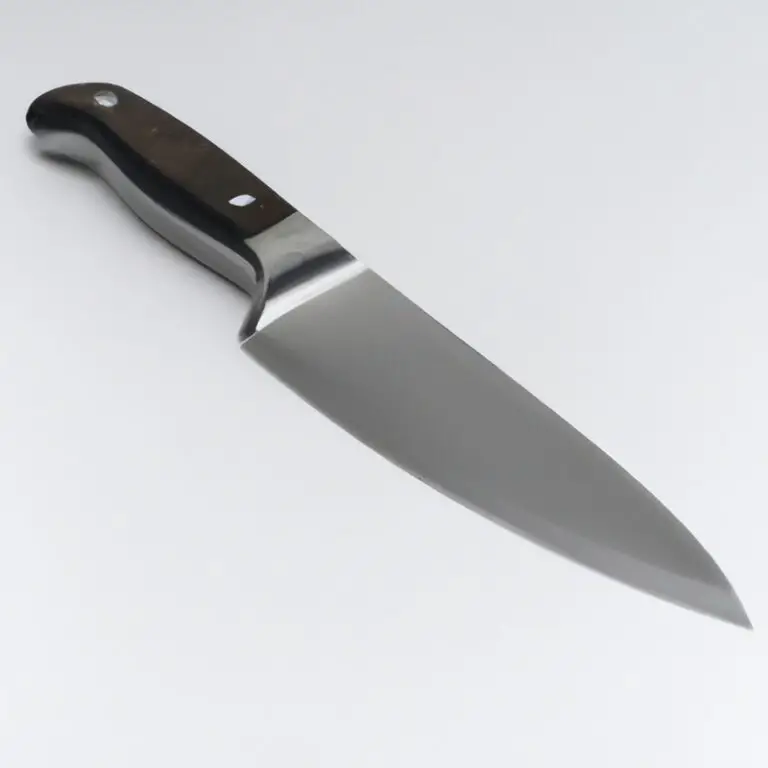Can I Use a Paring Knife To Peel Fruits And Vegetables? – Easily
Key Takeaways:
- Yes, a paring knife can be used to peel fruits and vegetables effectively.
- Ensure that the knife is sharp and use a proper technique to avoid injury.
- Consider the texture and size of the fruit or vegetable to determine if a paring knife is the best option for peeling.
- Experiment with different knives and techniques to find the best approach for your peeling needs.
Are you tired of constantly misplacing your vegetable peeler or fed up with it not doing its job correctly? Fear not, as you might already have a solution in your kitchen- a paring knife.
Yes, that miniature knife that you use for intricate kitchen tasks like carving radish roses or deveining shrimps can also be used for peeling fruits and vegetables.
However, is it a good idea to ditch your trusted peeler and opt for this multi-purpose knife? In this article, I will explore the pros and cons of using a paring knife for peeling, share tips on how to use it safely, and reveal the best fruits and vegetables to peel with a paring knife.
| Question | Answer |
|---|---|
| Can I use a paring knife to peel fruits and vegetables? | Yes, a paring knife is a suitable tool for peeling fruits and vegetables. |
| How is a paring knife different from a vegetable peeler? | A paring knife has a pointed tip and a straight or slightly curved blade while a vegetable peeler has a horizontal blade that is often serrated. |
| What are the advantages of using a paring knife for peeling? | Using a paring knife allows for more control and precision when peeling. It is also easier to remove blemishes and hard-to-reach spots. |
| What are the disadvantages of using a paring knife for peeling? | It is easier to accidentally cut yourself when using a paring knife. It may also take longer to peel with a paring knife compared to a vegetable peeler. |
Understanding Paring Knives
Paring knives are small, sharp knives that are primarily used for intricate tasks such as peeling and trimming fruits and vegetables. They are usually 2-4 inches in length and have a thin, pointed blade that allows for delicate and precise cuts.
Unlike vegetable peelers, paring knives can also be used for other kitchen tasks such as removing the eyes from potatoes and coring fruits.
However, they may not be suitable for peeling vegetables with tough skin, such as butternut squash or pumpkins. When using a paring knife for peeling fruits and vegetables, it is important to hold the knife securely and angle the blade away from your fingers to avoid injury.
Always sharpen the knife before use and wash it carefully to prevent accidents in the kitchen.
While paring knives are a versatile tool in the kitchen, they are not always the best option for peeling certain fruits and vegetables. For example, for tasks that involve peeling large quantities of produce or removing tough skin, a vegetable peeler may be more efficient.
To maintain the blade’s sharpness, it is recommended to sharpen your paring knife regularly and store it in a sheath or block when not in use.
With the proper care and usage, a paring knife can last for many years and be a valuable asset in any kitchen.
Paring Knives vs. Vegetable Peelers
Paring knives and vegetable peelers are both useful tools for peeling fruits and vegetables, but each has its own unique advantages and disadvantages. Paring knives are versatile and can be used for many kitchen tasks, including peeling, while vegetable peelers are specifically designed for peeling and can often work more quickly and efficiently.
Paring knives give you more control, but also require more skill and practice.
Vegetable peelers are easier to use, but may accidentally remove more edible flesh from the produce. Ultimately, the choice between a paring knife and vegetable peeler comes down to personal preference, skill level, and the specific task at hand.
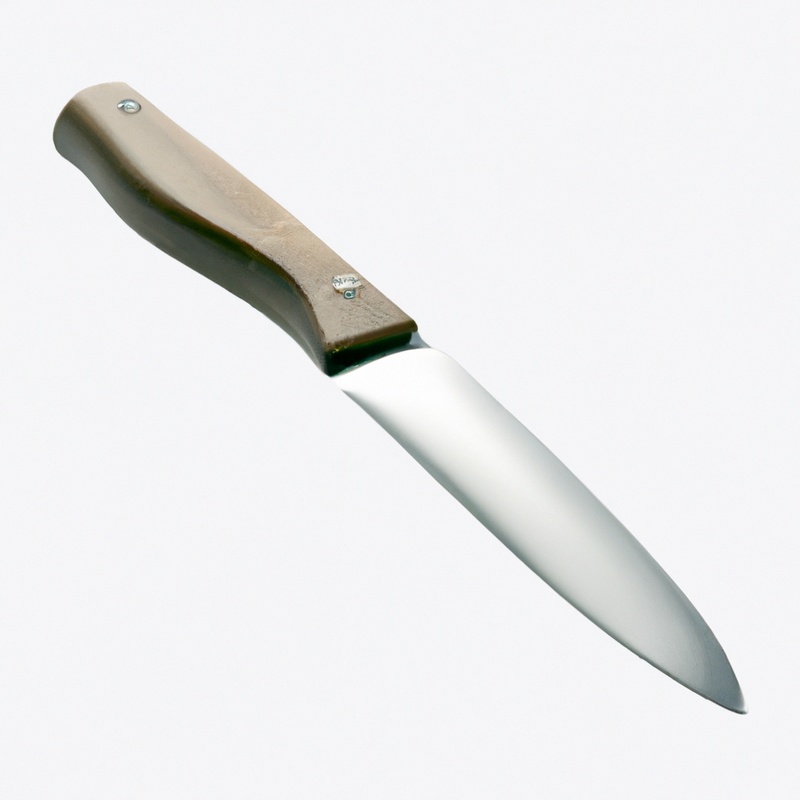
Pros and Cons of Using a Paring Knife for Peeling
Pros and Cons of Using a Paring Knife for Peeling: Pros:
- Paring knives are smaller and more precise, making it easier to remove blemishes and perform intricate cuts.
- They are versatile and can be used for both peeling and other tasks such as trimming, slicing, and garnishing.
- Paring knives are more affordable than some vegetable peelers and take up less space in the kitchen.
Cons:
- Paring knives require more skill and practice to use efficiently compared to vegetable peelers, making them more prone to accidents and injuries.
- Paring knives have a shorter blade length, so it may take longer to peel fruits and vegetables.
- Certain fruits and vegetables with thicker skins or shapes may be more difficult to peel with a paring knife.
Overall, paring knives can be a useful tool for peeling fruits and vegetables if used correctly, but it may not be the most efficient or safest option for everyone.
How to Use a Paring Knife for Peeling Fruits and Vegetables
To use a paring knife for peeling fruits and vegetables, follow these simple steps:
- Choose a ripe fruit or vegetable that needs to be peeled.
- Hold the item firmly in your non-dominant hand.
- With your dominant hand, grip the paring knife firmly and hold it perpendicular to the fruit or vegetable.
- Using gentle pressure, begin to slice away the skin in small sections, ensuring that you are not removing too much of the flesh.
- Continue the process until the entire fruit or vegetable is peeled to your liking.
Remember to always keep your fingers and hands away from the knife blade to avoid injury. If you are unsure about your knife skills, consider taking a cooking class or watching online tutorials for guidance.
Safety Tips for Using a Paring Knife for Peeling
Safety is of utmost importance when using a paring knife for peeling fruits and vegetables. Here are some safety tips to ensure injury-free peeling:
- Use a sharp knife. A dull knife increases the risk of slipping and injuring yourself.
- Always use a cutting board. Never hold fruits or vegetables in your hand while peeling.
- Keep your fingers away from the blade. Curl your fingers back while holding the fruit or vegetable to avoid accidentally cutting yourself.
- Use a stable surface. Ensure that the cutting board or surface you’re using is stable and secure to avoid any slips.
- Keep the knife pointed away from your body. This will minimize the risk of injury if the knife slips.
By following these safety tips, you can make peeling fruits and vegetables with a paring knife an easy and safe experience.
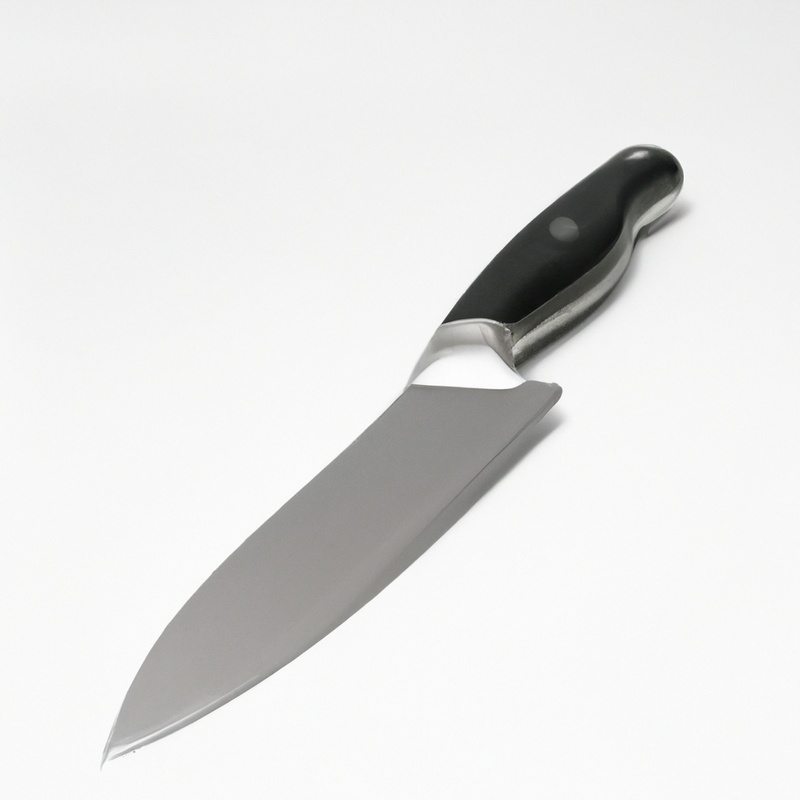
Best Fruits and Vegetables to Peel with a Paring Knife
Best Fruits and Vegetables to Peel with a Paring Knife:
- Apples – a paring knife can easily remove the skin from apples, making them ready for baking or snacking.
- Potatoes – a paring knife works well for removing the thin layer of skin on potatoes, which can be time-consuming using a vegetable peeler.
- Carrots – a paring knife can remove the outer layer of carrots without wasting too much of the vegetable.
- Pears – similar to apples, paring knives do an excellent job of removing the skin from pears, especially for baking or poaching.
- Kiwis – because of the soft and delicate skin, paring knives are an ideal tool to peel kiwis without damaging the fruit inside.
- Mangoes – a paring knife makes it easy to remove the tough outer skin of a mango, revealing the sweet and juicy fruit inside.
- Peaches – the soft and fuzzy skin of peaches can be easily removed using a paring knife, making them ready for cooking or eating.
While a paring knife can work well on these fruits and vegetables, it’s essential to practice caution and ensure the blade is sharpened to avoid accidents. Additionally, some fruits and vegetables may have varying levels of hardness or thickness that might require a different tool to peel effectively.
Alternative Tools for Peeling
Apart from a paring knife, there are several other tools that you can use to peel fruits and vegetables. Some of these include:
- Y-shaped vegetable peeler: The Y-shaped peeler has a sharp blade that is angled to make peeling fruits and vegetables quick and easy.
- Straight peeler: This peeler works in a similar way to the Y-shaped peeler, but it has a different blade angle that some people might find more comfortable to use.
- Julienne peeler: A julienne peeler has a serrated blade that is perfect for slicing fruits and vegetables into thin strips, which is great for salads and stir-fries.
- Mandoline: A mandoline is a slicing tool that can be used to peel and slice fruits and vegetables. It can be a bit tricky to use, but with a little practice, you can create uniform slices of produce in no time.
- Microplane: A microplane is a type of grater that can be used to remove the skins of citrus fruits. The sharp edges make it easy to remove just the top layer of peel, without removing any of the bitter white pith.
When choosing an alternative tool for peeling, be sure to consider the type of produce you are working with and the tool’s intended use. Different tools have unique advantages and disadvantages, so it’s essential to choose the right one for the job.
Maintaining and Sharpening Your Paring Knife
Maintaining and sharpening your paring knife is crucial to ensure that it performs at its best when peeling fruits and vegetables. To maintain your paring knife, make sure to clean it after every use, preferably by handwashing it with soap and water.
Avoid using the dishwasher, as the harsh chemicals and high heat can damage the blade.
To sharpen your paring knife, you can use a sharpening stone or a honing rod. A sharpening stone gradually grinds down the blade to remove any nicks or dullness, while a honing rod straightens the blade to maintain its edge.
It is recommended to sharpen your knife every 4-6 months, depending on how often you use it.
Additionally, make sure to store your paring knife in a knife block or sheath to protect the blade and prevent accidental injuries. Never store it loose in a drawer where it can get damaged or dull from rubbing against other utensils.
By following these simple tips, you can extend the lifespan of your paring knife and ensure that it stays sharp and efficient when peeling fruits and vegetables.
Final Verdict
Peeling fruits and vegetables with a paring knife is a reliable method that offers great precision. While peelers have their advantages, paring knives excel in versatility and can be a fantastic addition to your kitchen.
With the tips and techniques discussed in this article, you can safely and efficiently peel a wide range of produce using your paring knife.
By prioritizing maintenance and proper sharpening techniques, you can ensure that your paring knife remains a reliable tool for years to come. Trust us, with a little practice, you’ll become a pro at peeling everything from apples to zucchinis with your trusty paring knife in no time.

